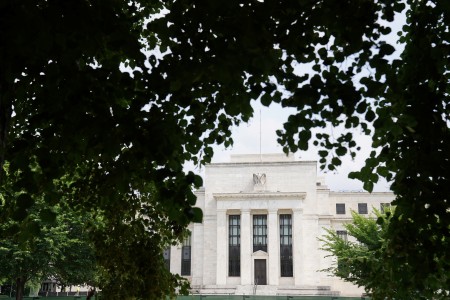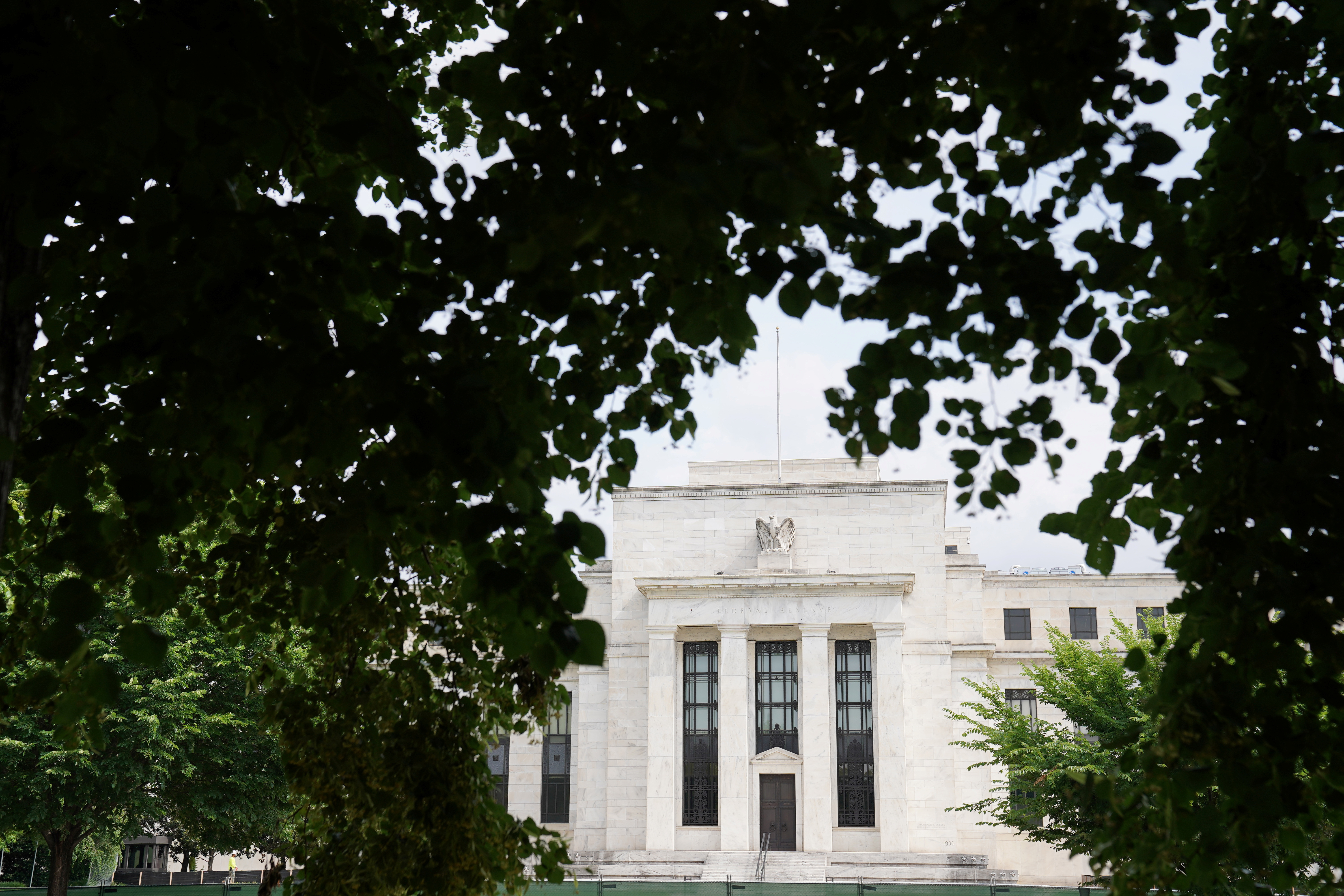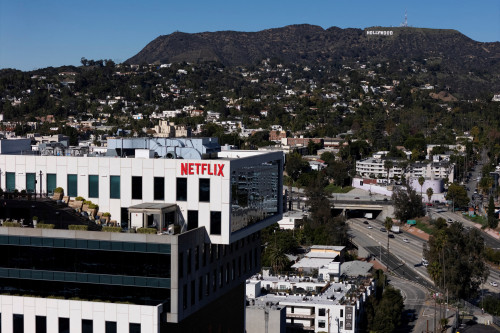(Reuters) – The Federal Reserve cut interest rates by half of a percentage point on Wednesday, kicking off what is expected to be a steady easing of monetary policy with a larger-than-usual reduction in borrowing costs that followed growing unease about the health of the job market.
Policymakers see the Fed’s benchmark rate falling by another half of a percentage point by the end of this year, another full percentage point in 2025, and by a final half of a percentage point in 2026 to end in a 2.75%-3.00% range.
MARKET REACTION:
STOCKS: The S&P 500 rose 0.5% after the news
BONDS: The yield on benchmark U.S. 10-year notes fell at 3.653%. The 2-year note yield fell to 3.552%
FOREX: The dollar index fell 0.6% with the euro up 0.58%. Both were about flat before the announcement.
COMMENTS:
ADAM BUTTON, CHIEF CURRENCY ANALYST, FOREXLIVE, TORONTO
“Powell has been a dove throughout his tenure, and he underscored that today. It’s clear that Powell doesn’t want to be behind the curve in a rate-cutting cycle and decided to move preemptively. At Jackson Hole he was clear that he didn’t want to see any further deterioration in the labor market, and I expect that to be his message in the press conference and that will put in play another 50-basis point cut in November if jobs numbers soften further.”
“Until recently, the market believed in U.S. dollar exceptionalism and the idea that U.S. growth would outperform, and rates would stay higher than elsewhere. It’s now clear that the Fed will be cutting just as fast or more quickly than other G10 central banks. So, there’s plenty of air to come out of the U.S. dollar if the Fed keeps up with this.”
“It’s a bold move, and I think history will judge it as the right one. The bond market is saying that the fight against inflation is won and there’s room to take rates all the way down to 3% before the Fed has to pause and think.”
MATTHIAS SCHEIBER, GLOBAL HEAD OF PORTFOLIO MANAGEMENT AT ALLSPRING GLOBAL INVESTMENTS SYSTEMIC EDGE TEAM, LONDON.
“A cut of at least 25 bps was widely expected based on recent inflation progress and economic data, and it was broadly welcomed as a sign that yes, this lengthy era of high interest rates will eventually end. We believe the Federal Reserve will continue to cut rates two more times this year to support economic growth – though in smaller 25-bp steps rather than jumbo 50-bp ones.
“The key data we’re monitoring is the labor market – the main challenge for the U.S. economy moving forward. The U.S. unemployment rate, which has steadily increased in 2024, ticked up to 4.1% in June. Forward-looking growth indicators for the U.S. manufacturing sector remain weak, and while the services sector is still growing, it’s at a slower rate compared with earlier in the year.
“Our base case is that the Fed will cut in each of its last two meetings this year in order to support gradual slowing of the U.S. economy. We also expect the Fed to remain vigilant in monitoring inflation as the fight might not be over just yet. Beyond 2024, the interest rate market is already pricing in more rate cuts, all the way until May 2025. However, this seems to us to be on the higher end – we expect growth to soften but do not foresee an outright U.S. recession.
“We continue to favor bonds, which benefit from moderating growth and moderating inflation, particularly internationally. We also continue to like equities – especially the cheaper parts of the U.S. equity market, excluding mega-cap U.S. technology equities. We expect the equity rally to broaden and believe that any relief from perceived looser monetary policy would likely support equity prices in the medium term.
“Upcoming U.S. elections and ongoing geopolitical uncertainty will keep markets more volatile, and we expect the Fed to take these developments into account.”
PETER CARDILLO, CHIEF MARKET ECONOMIST, SPARTAN CAPITAL SECURITIES, NEW YORK
“I was expecting a 25 basis point cut. I thought they would go gradual, but they were more generous than I expected them to be. The big surprise here is that they’ve indicated further cuts, possibly another 50 bps by year end.
“The Fed move was dovish. I guess their biggest fear is that the labor market is getting overly weak, and that I think is the reason why they did it.
“The initial reaction in the markets is positive. But what we’re seeing in the market right now could change over the next couple of days as investors begin to worry about the economy.”
TOM HERRICK, CHIEF MARKET STRATEGIST, CARY STREET PARTNERS, RICHMOND VA
“The starting point is a very restrictive place. To go down 50 when you have both PCE and CPI annualized below target, there’s a ton of room to go lower here, combined with what I would call wobbly labor data, wobbly not terrifying. They’re making more progress than some had thought right away. It’s unusual for a 50 bp move. Typically when you see 50 to the downside it’s 2007, it’s the economy-falling-to-pieces sort of thing, that’s not our situation right now. Remember two years ago we were getting 75 to the upside, and that’s because they were so far behind. This is somewhat the same they’re a little behind but really your starting point is so restrictive…. There’s a lot of room to go lower so they took a big bite to start.”
BRIAN JACOBSEN, CHIEF ECONOMIST, ANNEX WEALTH MANAGEMENT, MENOMONEE FALLS, WISCONSIN
“The Fed ended the pause with a bang. It’s a strong signal that they cut by 50 bps and expect another 50 basis points of cuts this year. This was controversial. Powell has the lowest number of dissents for decisions since the 1950s. The last time there was a dissent was in June 2022 when George wanted them to slow down the hikes. This time the dissent was because they wanted a slower pace of cuts. The Fed is projecting that by front loading the cuts they can stick the landing with the unemployment rate at 4.4% and inflation dropping to target quickly.”
ERIC ORENSTEIN, SENIOR DIRECTOR, FITCH RATINGS, NEW YORK (in email)
“The Fed’s 50bp rate cut likely adds downward momentum for mortgage rates, which have already come down materially since May as treasuries have rallied. While not enough for a full scale refi boom, an average 30-year rate approaching 6% does open up a meaningful slice of the market for refinancing. Mortgage originators stand to benefit, and will likely find the toughest times already behind them.”
MICHELE RANERI, HEAD OF U.S. RESEARCH AND CONSULTING AT TRANSUNION IN CHICAGO (in email)
“Today’s reduction in interest rates could ultimately allow for consumers to see lower monthly payments. It also may allow for many consumers to consider refinancing higher interest debt into a lower interest credit product such as a personal loan or home equity loan.
In recent months, lenders have begun exercising more discretion when it comes to whom they are extending credit, preferring less risky borrowers. It remains to be seen whether this interest rate reduction will see lenders once again offering credit to a larger segment of the consumer population, but it could help in that regard.”
(Compiled by the Global Finance & Markets Breaking News team)






